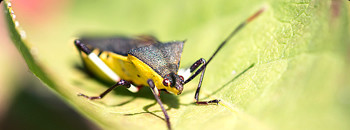While schools are eager to welcome back students this fall, they are already working to create an unwelcome environment for insects, rodents, weeds, and other pests. As allergens from rodents like cockroaches are a significant cause of asthma in children[i], and bites from insects like ticks carry disease[ii], a strategic approach to managing pests is essential for creating a safe place for students to learn and grow.
An Integrated Pest Management (IPM) approach is one way to protect children. The approach works by creating a plan for identifying, monitoring and, as much as possible, preventing pest problems before they happen.
“IPM is implemented by many school administrators, because it manages pests by using all the tools in the pest control toolbox, including maintenance, monitoring of pest populations, sanitation and pesticides,” said Janet Hurley, extension program specialist in school IPM for Texas A&M AgriLife Extension Service. “Pesticide use in schools is part of a specific, strategic plan designed to use pest control products in the safest and most prudent way possible.”
IPM combines the use of products reviewed and approved by the U.S. Environmental Protection Agency (EPA) and proactive pest control practices. A successful IPM program can reduce pest complaints by nearly 90 percent, according to the EPA.or Texas A&M AgriLife Extension Service. “Pesticide use in schools is part of a specific, strategic plan designed to use pest control products in the safest and most prudent way possible.”
“As a parent, I appreciate the use of IPM programs in school to safely protect classrooms, playgrounds and athletic fields where my children play,” said Bobby Kossowicz, a New Jersey mother of two who combines her past professional experience in the pest control industry and insight as mother to educate others. “I have such confidence in the approach that I use IPM around my home too.”
RISE (Responsible Industry for a Sound Environment)® shares the following steps for implementing IPM both at school and at home:
- Take an educated approach. Monitor the pests for their locations and populations to establish the source of the pest problem.
- Identify an appropriate threshold. Prioritize pest control based on the most immediate threat.
- Remove pest-attracting conditions. Replace waste receptacles and keep them clean, prevent water from pooling near where children play, and keep grounds free of litter and leaf debris.
- Use pesticides when necessary. Include judicious and targeted use of pesticides when the situation calls for effective management of pest and weed populations.
Read and follow all label directions when using pest control products. Learn more about IPM by visiting www.DebugTheMyths.com and join the conversation on Facebook and Twitter.
About RISE
Located in Washington, D.C., RISE is the national association representing the manufacturers, formulators, distributors, and other industry leaders involved with pesticide and fertilizer products used in vector control, pest control, turf, ornamental, aquatic and terrestrial vegetation, and other non-food/fiber applications. Learn more about RISE at www.debugthemyths.com.

[i] Environmental Protection Agency (EPA) http://www.epa.gov/asthma/pests.html
[ii] Centers for Disease Control and Prevention (CDC) http://www.cdc.gov/lyme/

